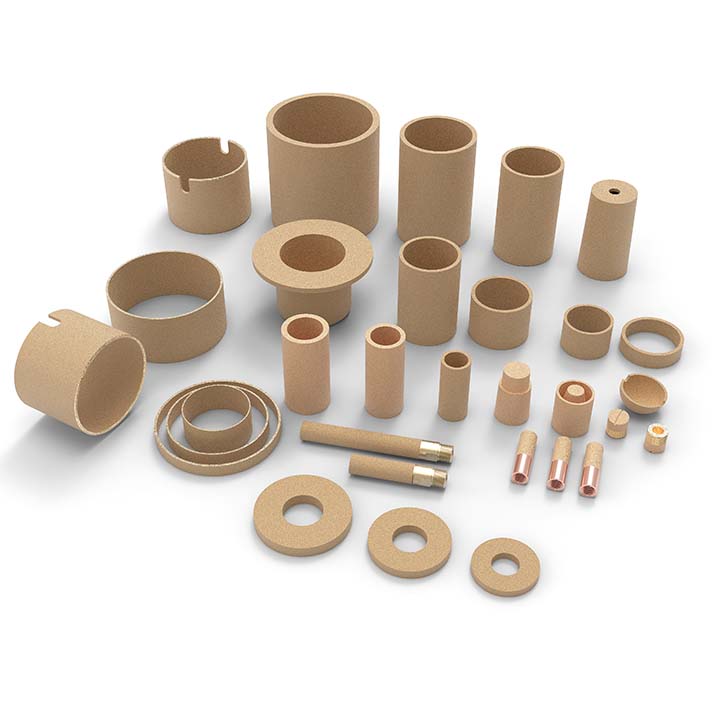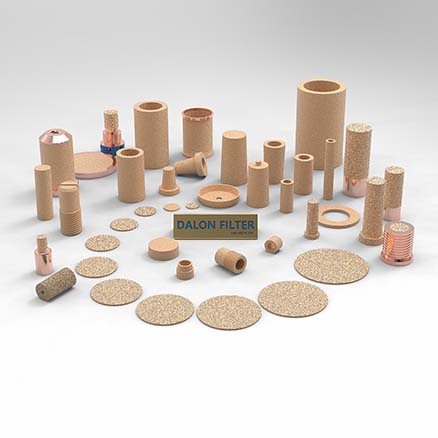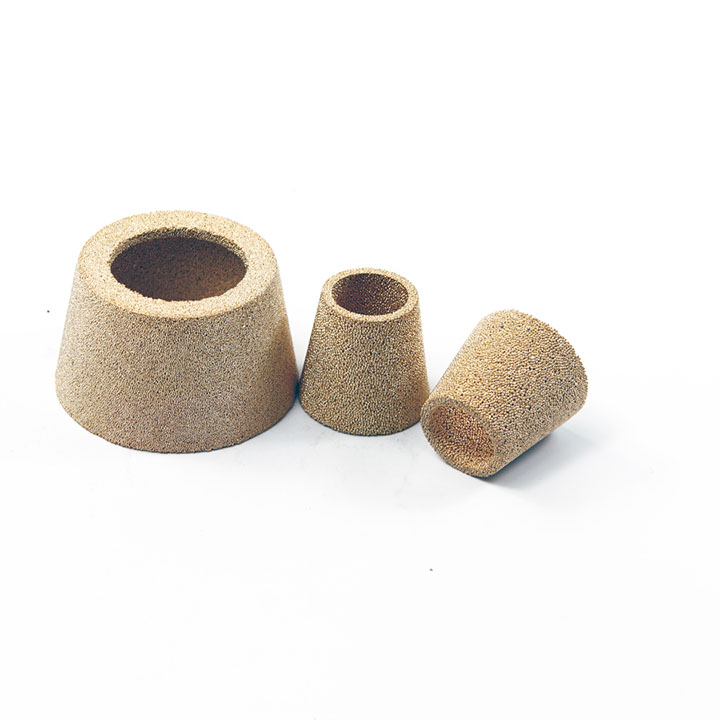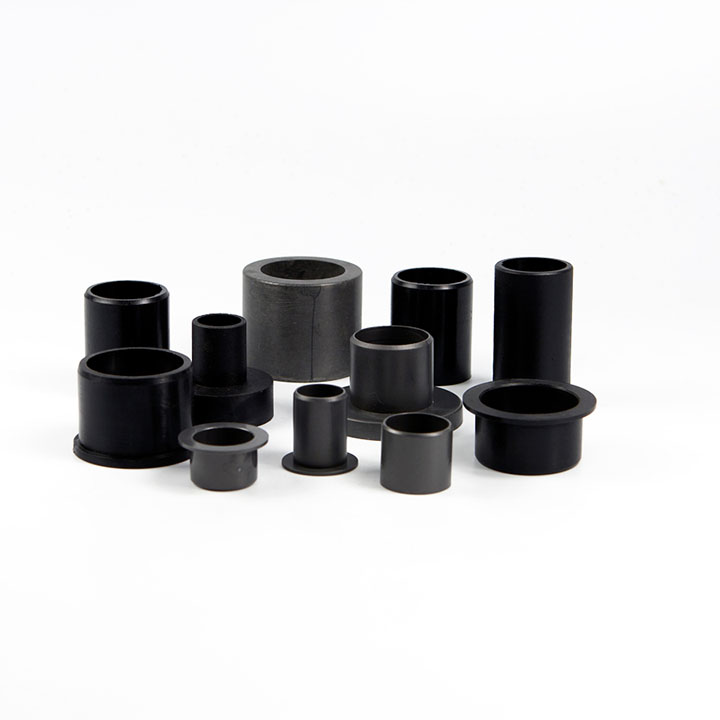Introduction: Why Proper Maintenance Matters

Sintered bronze air filter elements are engineered for durability, reusability, and high-performance filtration in industrial environments. Unlike disposable filters, these porous metal components can be cleaned and restored to near-original performance levels, making them a cost-effective and sustainable choice for a wide range of applications—from pneumatic systems and compressors to automotive air intakes and hydraulic vents.
However, to ensure optimal filtration performance and extend service life, regular maintenance and proper cleaning of sintered bronze filters are essential. This blog provides a comprehensive overview of how these filters should be serviced when they become dirty, including step-by-step cleaning methods, inspection guidelines, and reinstallation tips.
Whether you’re an operations manager, maintenance technician, or engineer responsible for keeping compressed air systems running efficiently, this guide offers the practical knowledge needed to get the most out of your sintered bronze filter elements.
Understanding Sintered Bronze Air Filters
Sintered bronze filters are produced through a powder metallurgy process that fuses fine bronze particles into a rigid, porous structure. This structure allows gases or fluids to pass through while trapping solid contaminants like dust, oil aerosols, and particulates.
Key Features of Sintered Bronze Filters:
- Pore Size Range: 5 to 100 microns (typical)
- Temperature Resistance: Up to 200°C (392°F)
- Pressure Handling: Can tolerate high-pressure environments
- Reusable: Designed for multiple cleaning and regeneration cycles
- Applications: Air compressors, pneumatic valves, intake vents, silencers, automotive breather systems
Because the filter captures contaminants throughout its entire depth (not just on the surface), it offers superior dirt-holding capacity and longer service intervals compared to conventional fiber or mesh filters.
Signs Your Sintered Bronze Filter Needs Servicing
Even with high dirt-holding capacity, sintered bronze filters can eventually clog—especially in dusty, oily, or high-load environments. Common indicators that cleaning is needed include:
- Increased pressure drop across the filter
- Reduced airflow or vacuum draw
- Visible discoloration or darkened surface
- Audible whistling or hissing sounds from air restriction
- System alarms or pressure switch triggers
It’s good practice to monitor pressure differentials or flow rates regularly and plan preventive maintenance based on hours of operation or environmental exposure.
Step-by-Step Guide: How to Service a Sintered Bronze Filter Element
Step 1: Pre-Cleaning Assessment
Before cleaning, assess the condition of the filter:
- Note installation orientation and flow direction
- Visually inspect for physical damage (cracks, crushed areas)
- Determine the type of contamination (dry dust, oil, carbonized material)
- Check for any system compatibility warnings (e.g., chemical sensitivity)
This evaluation helps you choose the right cleaning method and avoid unnecessary degradation.
Step 2: Choose the Right Cleaning Method
There are three primary methods for cleaning sintered bronze air filters—mechanical, chemical, and thermal. The choice depends on the type and extent of contamination.
A. Mechanical Cleaning (For Light, Dry Contaminants)
This is the simplest and fastest method for filters clogged with dry dust or particulate.
Procedure:
- Use compressed air (maximum 6 bar / 87 psi) to blow out contaminants.
- Direct air from the inside out (reverse flow) to dislodge particles.
- Use a soft nylon brush to gently scrub the surface if needed.
- Avoid metal brushes, abrasive pads, or high-pressure water.
✅ Best for: Routine maintenance, mildly dirty filters
❌ Avoid if: Filter is oil-soaked or has sticky contaminants
B. Chemical Cleaning (For Oil, Grease, Sticky Deposits)
When mechanical methods aren’t sufficient—especially in oily or humid environments—chemical cleaning becomes necessary.
Method 1: Degreasing Soak
- Submerge the filter in a non-corrosive degreasing solvent, such as:
- Isopropyl alcohol
- Acetone
- Aqueous alkaline degreasers
- Soak for 30–60 minutes depending on contamination level.
- Rinse with clean water and blow-dry using compressed air.
Method 2: Ultrasonic Cleaning
- Place the filter in an ultrasonic tank filled with a mild detergent solution.
- Run for 5–10 minutes at 40–60°C.
- Rinse thoroughly after the cycle.
- Blow-dry with air and inspect.
Method 3: Acid Washing (For Oxidation or Scale)
- Use a dilute citric acid or phosphoric acid solution (5–10%).
- Soak for 10–15 minutes.
- Neutralize with baking soda solution and rinse multiple times.
✅ Best for: Greasy, oily filters or those with chemical residue
❌ Avoid harsh acids (HCl, H2SO4), as they may erode bronze
C. Thermal Cleaning (For Carbonized or Burnt Deposits)
If the filter has been exposed to exhaust fumes, combustion byproducts, or resinous particles, thermal treatment may be required.
Procedure:
- Place the filter in a clean furnace or kiln with air circulation.
- Heat gradually to 400–500°C (752–932°F) for 1–2 hours.
- Allow slow cooling to prevent thermal shock.
- Inspect after cooling for cracks or discoloration.
✅ Best for: Deep carbon contamination
❌ Ensure proper ventilation; only for metal filters without plastic parts
Step 3: Post-Cleaning Inspection
After cleaning, it’s crucial to verify the filter’s condition before reinstalling:
A. Airflow Test
- Blow compressed air through the filter.
- Check for uniform air passage.
- Uneven flow or backpressure indicates residual clogging.
B. Visual Inspection
- Check for cracks, warping, discoloration, or deformation.
- Surface should be free of oily sheen or sticky residue.
C. Bubble Point Test (For Critical Applications)
- Submerge the filter in isopropyl alcohol.
- Apply air pressure slowly.
- Observe the point where bubbles start to emerge—this bubble point confirms integrity of pore structure.
If any structural integrity is lost, the filter should be retired from service.
Step 4: Reinstallation and Preventive Maintenance Tips
Re-Oiling (If Applicable)
- In engine or intake systems, lightly re-oil the filter using specialized filter oil.
- This helps capture fine dust particles and enhance performance.
Monitor Differential Pressure
- Record pressure drop across the filter at reinstallation.
- Use this as a baseline to determine future cleaning intervals.
Keep a Cleaning Log
- Track:
- Cleaning dates
- Method used
- Results of inspection tests
- Helps ensure traceability and predict filter lifespan trends
Dos and Don’ts Summary
| Action | Recommendation |
|---|---|
| Compressed Air | Max 6 bar; always inside-to-outside |
| Brushes | Soft nylon only; never metal |
| Ultrasonic Bath | Max 60°C; mild detergent only |
| Acid Clean | Use citric/phosphoric acid only |
| Furnace Heat | Max 500°C; avoid thermal shock |
| High-Pressure Water | ❌ Avoid—it can damage pores |
| Aggressive Abrasives | ❌ Avoid—can alter pore size |
Maintenance Frequency Guide
| Application | Cleaning Frequency |
|---|---|
| Clean compressed air | Every 6–12 months |
| Oily compressor output | Every 2–3 months |
| Automotive breather systems | 3,000–5,000 km |
| Pneumatic tools in dusty areas | Monthly or after 200 hrs |
| Critical lab or pharma systems | As per SOP and validation |
Advantages of Cleaning Over Replacement
- Lower Operating Costs – One filter lasts for years when properly maintained
- Reduced Waste – Eco-friendly alternative to disposable filters
- System Performance – Maintains high flow and low pressure drop
- Downtime Reduction – Cleaning is faster than sourcing and replacing
Investing time in proper maintenance pays dividends in system reliability and cost savings.
Frequently Asked Questions (FAQ)
Q1: How many times can a sintered bronze filter be cleaned?
Typically, a sintered bronze filter can undergo 10–20 cleaning cycles or more, depending on application severity and proper handling during maintenance.
Q2: Can I use high-pressure water jets for cleaning?
No. High-pressure water may damage the fine porous structure and alter pore size or distribution, compromising filtration performance.
Q3: Can sintered filters be used without re-oiling?
Yes, but in certain intake applications, light re-oiling helps capture finer particles and improve dust-holding efficiency. Always follow system guidelines.
Q4: How do I know if my filter is permanently damaged?
Signs include:
- Cracks or breaks
- Severe warping
- Inability to pass airflow
- Failed bubble-point testing
Such filters must be discarded and replaced.
Q5: Are all sintered metal filters cleanable?
Most are, but confirm with the manufacturer. Some filters with layered construction or embedded sealing elements may have limitations.
Keep Your Filters Working Longer with Proper Care
Sintered bronze air filter elements are built for longevity—but their performance and lifespan are directly tied to how well they’re maintained. By following the right cleaning techniques—mechanical, chemical, or thermal—and regularly inspecting for wear, you can extend the life of your filter several-fold while maintaining optimal airflow and system reliability.
From basic backflushing to deep ultrasonic or thermal cleaning, the serviceability of these filters makes them a preferred choice in industrial and automotive settings. As sustainability and operational efficiency become more important across industries, properly maintaining reusable filters like sintered bronze elements is a smart and responsible approach.
Explore our full range of sintered bronze air filters and maintenance accessories here to keep your systems running clean, efficient, and cost-effective.



